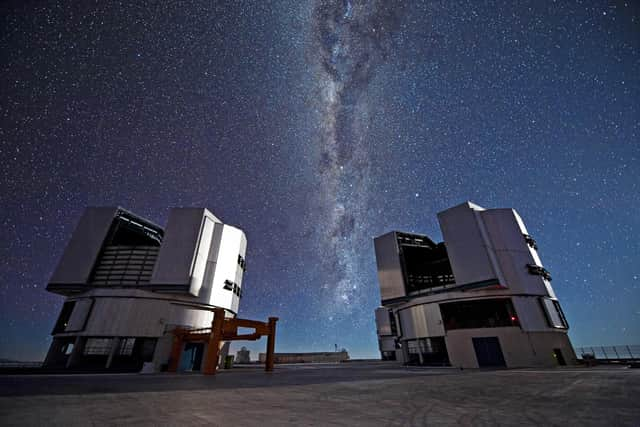Armagh Observatory and Planetarium make startling asteroid discovery
and live on Freeview channel 276
Astronomers from Armagh Observatory and Planetarium have played a key role in studying the outcome of the spectacular Double-Asteroid Redirection Test (DART), a space mission conducted by NASA and ESA that hit the Didymos-Dimorphos double asteroid last year.
A recently published paper outlines the findings of the research, which was conducted by astronomers at Armagh Observatory and Planetarium, along with an international group of peers. It describes how tests on the composition of the impacted asteroid will help to further understanding of how asteroids form and how best to alter their trajectory, should they pose a threat to planet Earth.
Advertisement
Hide AdAdvertisement
Hide AdPublished by the Astrophysical Journal, the paper titled Optical spectropolarimetry of binary asteroid Didymos-Dimorphos before and after the DART impact, is based on data gathered with the European Southern Observatory’s Very Large Telescope.


Using a method known as spectro-polarimetry, in which they are world-leading experts, Armagh Observatory and Planetarium's Dr Stefano Bagnulo and PhD student Zuri Gray compared data taken before and after the impact to find that the composition of the material excavated by the impact is different to the material on the surface of the asteroid.
One potential explanation for this difference is that the ejected material is made of smaller particles than those present on the surface of the asteroid.
Alternatively, the observed difference could be due to ‘space weathering’, a form of wear and tear that affects the surface of celestial bodies that are exposed to the harsh conditions of space.
Advertisement
Hide AdAdvertisement
Hide AdZuri Gray, PhD student at Armagh Observatory and Planetarium says, “Understanding the structure of asteroids is vital to planetary defense as it informs how to potentially alter their trajectory.
“The DART mission is an important step towards understanding how we can mitigate the risks of asteroid impacts and safeguard our planet. By pushing the boundaries of space exploration, we can make strides in ensuring the safety of Earth and its inhabitants.”
Over two thousand asteroids are officially classified as potentially hazardous, although astronomers have yet to identify any that will definitely hit Earth.
Successfully executed on September 26, 2022, the DART space mission was designed to test the human capability of deflecting an asteroid that may pose a threat to Earth. Its target was the Didymos-Dimorphos double asteroid system.
Advertisement
Hide AdAdvertisement
Hide AdPrior to the mission, Dimorphos orbited around Didymos approximately once every 12 hours.
The goal of DART was to reduce this time by crashing a spacecraft into the asteroid system.
Measurements taken have shown that the orbital period of Dimorphos was reduced by 33 minutes.
For the first time in history, humans had moved a celestial body.
To find out more about the Armagh Observatory and Planetarium, visit: www.armagh.space.